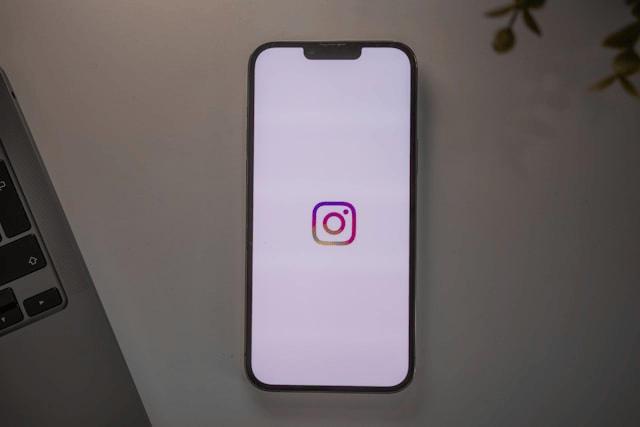If you’re new to Instagram and wondering how people turn a simple profile into a thriving business or personal brand, you’re not alone. With over 2 billion monthly active users and some of the highest engagement rates among social platforms, Instagram is one of the most powerful tools for building an audience, boosting sales, and growing influence.
The good news? You don’t need a massive budget or advanced marketing skills to succeed. You just need a clear, beginner-friendly plan and that’s exactly what this guide will give you.
Step 1: Define Your Goals
Before you start posting, you need to know why you’re on Instagram. Without clear goals, your content will feel random and your results will be unpredictable.
Common goals include:
-
Brand awareness – getting more people to know about you or your business.
-
Sales and leads – driving traffic to your website, store, or offers.
-
Community building – connecting with like-minded people and loyal fans.
Once you’ve chosen your main goal, everything you post should connect back to it. For example, if your goal is sales, you’ll focus on showcasing products and adding clear calls to action.
Step 2: Understand Your Audience
Instagram for beginners isn’t just about posting pretty photos it’s about knowing who you’re posting for.
Ask yourself:
-
Who do I want to attract?
-
What are their interests, struggles, and goals?
-
What kind of content do they already engage with on Instagram?
Use Instagram’s search function, explore relevant hashtags, and check out accounts your ideal audience already follows. The better you understand them, the easier it is to create content they’ll love.
Step 3: Optimize Your Profile
Your profile is your Instagram storefront. When someone visits, they should instantly understand who you are, what you do, and why they should follow you.
Here’s what to focus on:
-
Profile picture – Use a clear headshot or logo.
-
Bio – Write a short, engaging description of what you offer, including keywords your audience might search.
-
Clickable link – Direct followers to your website, landing page, or latest offer.
-
Highlights – Use them to showcase important categories like “Products,” “Testimonials,” or “About Me.”
Step 4: Plan Your Content
Posting on the fly works for some people, but most beginners grow faster with a content plan.
Types of Instagram content:
-
Feed posts – Photos or carousels for evergreen content.
-
Stories – Short, casual updates that disappear in 24 hours.
-
Reels – Short videos that get boosted in the Explore feed for new reach.
-
Carousels – Swipeable posts for tips, tutorials, or product showcases.
A simple rule for beginners: pick 3–4 content pillars categories that you’ll post about regularly. For example:
-
Behind-the-scenes
-
Tips & tutorials
-
Product features
-
Customer stories
Mix educational, entertaining, and promotional content so followers stay interested without feeling like they’re being sold to constantly.
Step 5: Use Hashtags and Captions Strategically
Hashtags help Instagram show your content to the right people, and captions keep them engaged.
Hashtag tips for beginners:
-
Use a mix of popular and niche hashtags related to your topic.
-
Avoid spammy or irrelevant tags.
-
Rotate your hashtags instead of using the same ones every time.
Caption tips:
-
Start with a hook to grab attention.
-
Share value or tell a short story.
-
End with a call to action ask a question, invite comments, or encourage sharing.
Step 6: Engage With Your Audience
One of the easiest ways to grow on Instagram is simply to talk to people. Reply to comments, answer direct messages, and leave thoughtful comments on others’ posts.
Engagement isn’t just about being polite it signals to Instagram’s algorithm that your account is active and worth showing to more people.
Daily engagement habits for beginners:
-
Reply to every comment on your posts.
-
React to followers’ stories.
-
Comment on posts from similar accounts.
Step 7: Leverage Instagram Features
Instagram keeps rolling out new tools, and using them can help boost your reach.
Key features to try:
-
Stories – Use polls, quizzes, and question stickers to increase interaction.
-
Reels – Short, trending videos can get discovered by thousands of non-followers.
-
Shopping – Tag products so users can shop directly from your posts.
-
Link stickers – Share important links in your stories.
The algorithm often rewards users who try new features, so don’t be afraid to experiment.
Step 8: Track and Adjust
No Instagram marketing strategy is perfect from day one. Use Instagram Insights to see what’s working:
-
Which posts got the most reach and engagement?
-
What time of day do your followers interact the most?
-
Are you gaining or losing followers over time?
Adjust your content plan based on what the data tells you. If Reels are bringing you new followers, make more. If carousel posts get saved and shared often, keep them coming.
Beginner Pitfalls to Avoid
When starting out, it’s easy to make mistakes that slow your growth:
-
Buying followers – They won’t engage with your content and can harm your credibility.
-
Posting without a plan – Random content confuses your audience.
-
Ignoring analytics – Without tracking results, you won’t know what’s working.
Conclusion
A good instagram marketing strategy doesn’t have to be overwhelming. By setting clear goals, knowing your audience, optimizing your profile, and posting with purpose, you can build a strong foundation for long-term growth.









